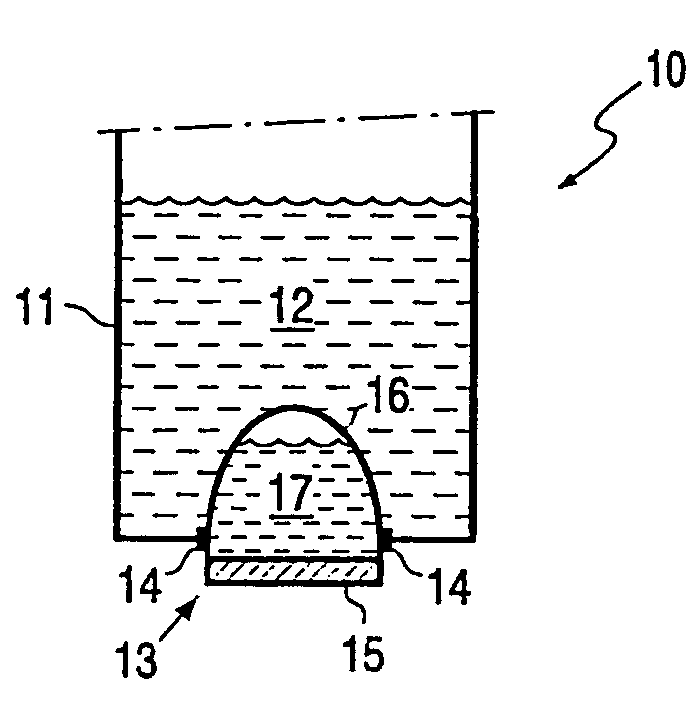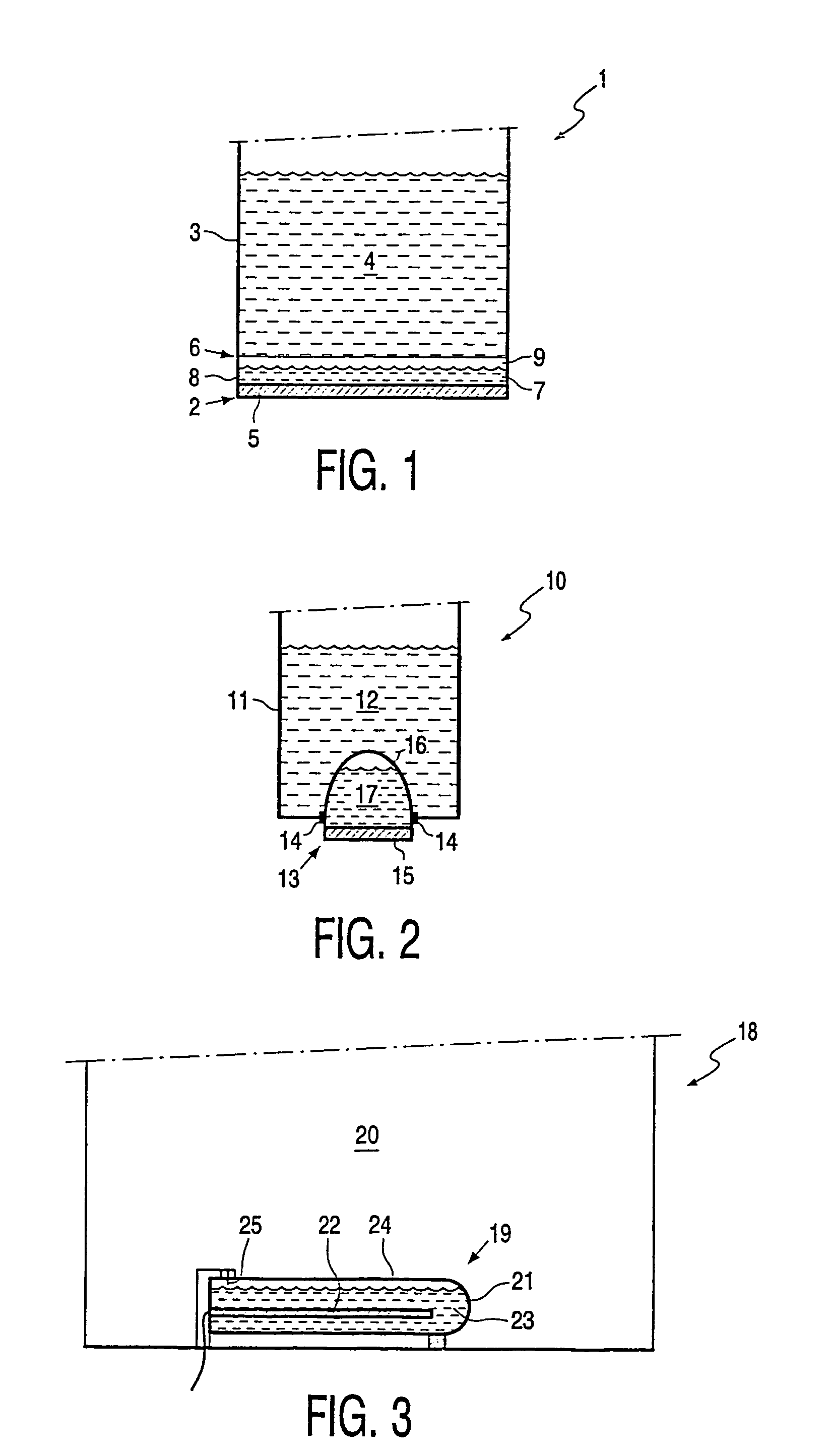Device for heating liquids and assembly for use in such a device
a technology for heating liquids and liquid containers, which is applied in the direction of fluid heaters, electric heating, electrical apparatus, etc., can solve the problems of reducing the heat-transferring capacity of the second liquid container considerably, and achieve the effects of reducing the boiling point of the intermediary liquid, and enhancing vapour bubble formation
- Summary
- Abstract
- Description
- Claims
- Application Information
AI Technical Summary
Benefits of technology
Problems solved by technology
Method used
Image
Examples
first embodiment
[0022]FIG. 1 shows a cross-section of a water kettle 1 provided with a heating device 2 according to the invention. Water kettle 1 comprises a first liquid container 3 for water for heating 4. Heating device 2 comprises a heating element 5 and a second liquid container 6 provided with an intermediary liquid 7. As shown clearly in FIG. 1, the second liquid container 6 forms a physical separation between heating element 5 and the water for heating 4 in the first liquid container 3. Heating of water 4 will thus always take place by means of heat transfer from heating element 5 to the water for heating 4 via the second liquid container 6 and the intermediary liquid 7 received therein. In this manner deposition of the components present in the water for heating 4, such as for instance deposition of limescale, on heating element 5 can be prevented. The great advantage hereof is that the capacity (progression) of heating element 5, and thus of water kettle 1, to transfer heat to the water ...
second embodiment
[0023]FIG. 2 shows a cross-section of a water kettle 10 provided with a heating device according to the invention. Water kettle 10 comprises a first liquid container 11 for water to be heated 12, and a heating device 13 for heating the water to be heated 12. Heating device 13 is arranged in an opening arranged in the first liquid container 11. For sufficient sealing of this opening the heating device 13 is positioned in the opening with clamping fit and via a sealing ring 14. Heating device 13 comprises a heating element 15 and a boiler 16 connected to heating element 15, which boiler 16 is partially filled with an intermediary liquid 17. Other than in FIG. 1, the intermediary liquid 17 is now in direct (physical) contact with heating element 15. Boiler 16 takes a substantially conical form and is preferably manufactured from a material which allows reversible deformation during temperature fluctuations. Examples of such materials can be for instance plastic or metal. Deformation of...
PUM
 Login to View More
Login to View More Abstract
Description
Claims
Application Information
 Login to View More
Login to View More - R&D
- Intellectual Property
- Life Sciences
- Materials
- Tech Scout
- Unparalleled Data Quality
- Higher Quality Content
- 60% Fewer Hallucinations
Browse by: Latest US Patents, China's latest patents, Technical Efficacy Thesaurus, Application Domain, Technology Topic, Popular Technical Reports.
© 2025 PatSnap. All rights reserved.Legal|Privacy policy|Modern Slavery Act Transparency Statement|Sitemap|About US| Contact US: help@patsnap.com


